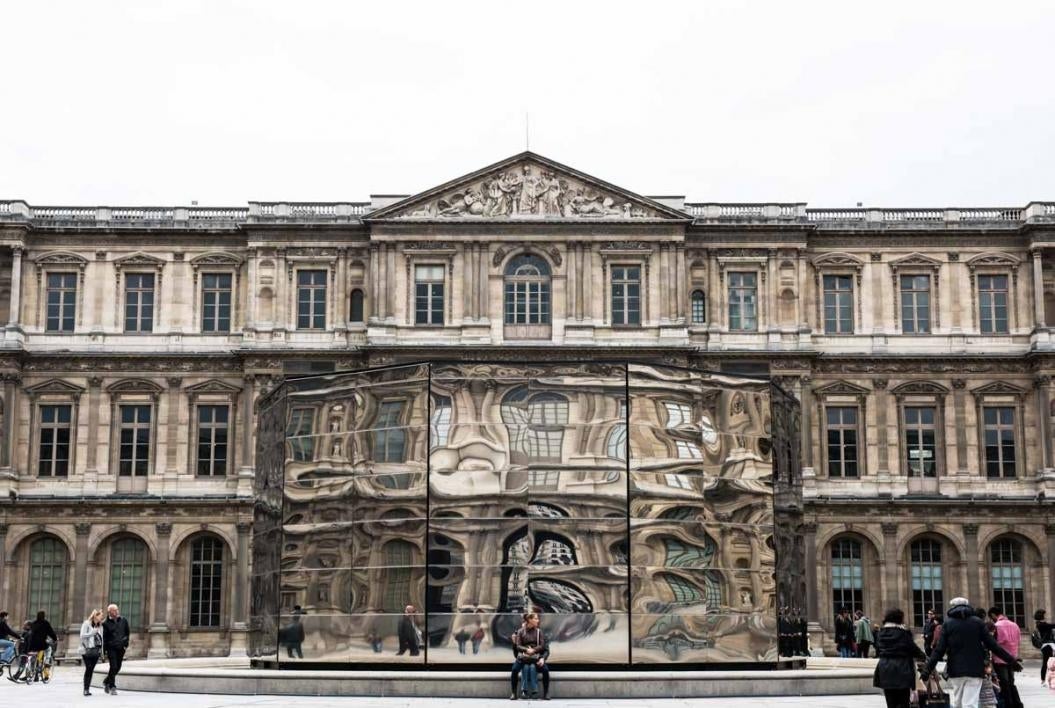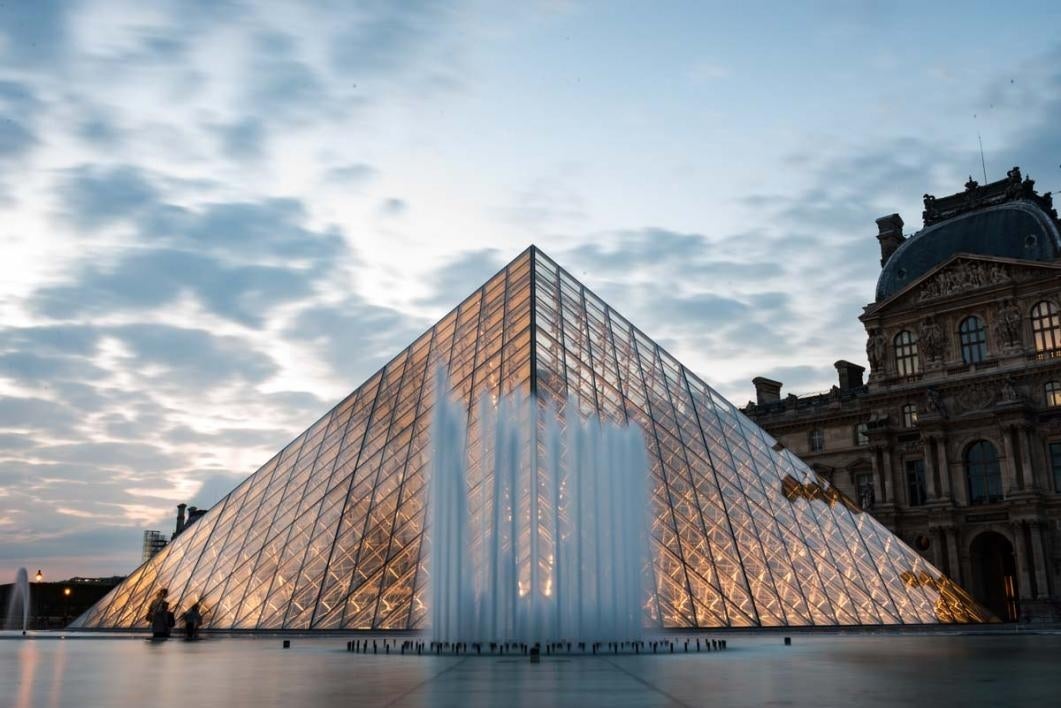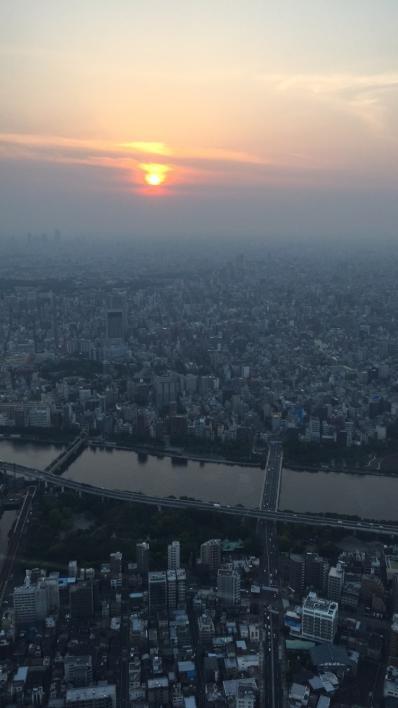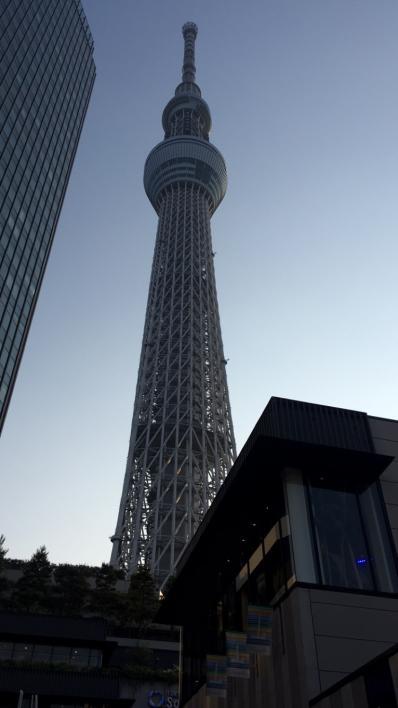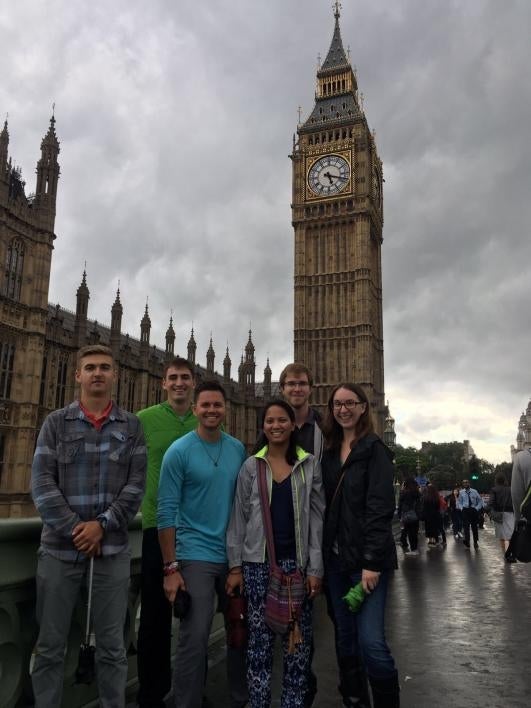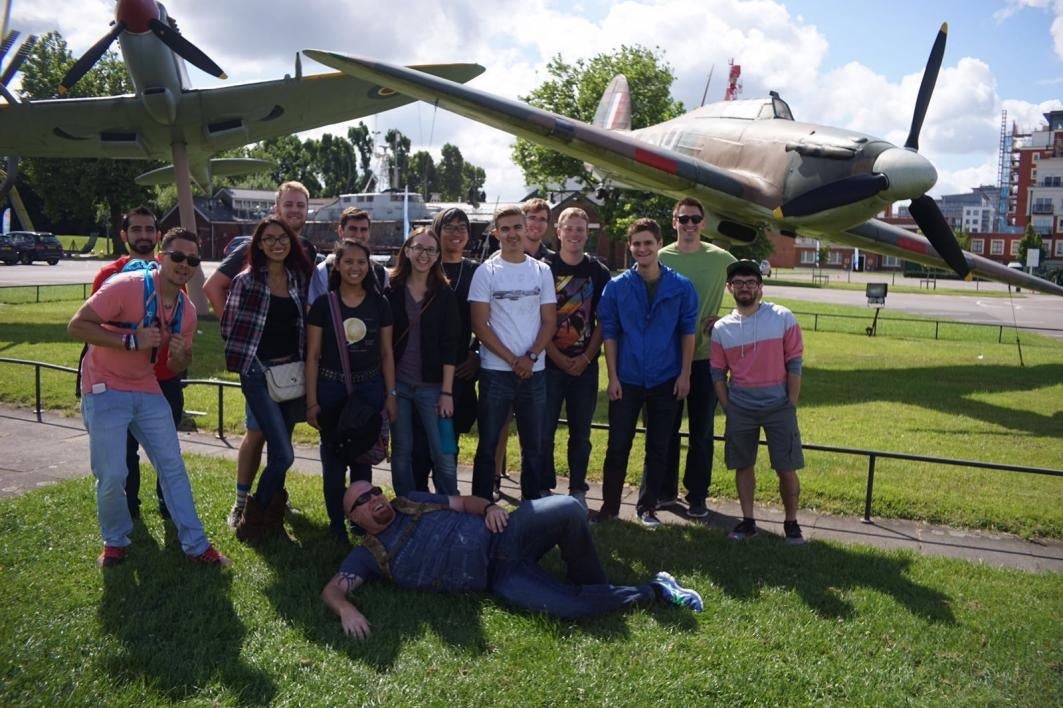ASU engineering students take to a summer of study abroads
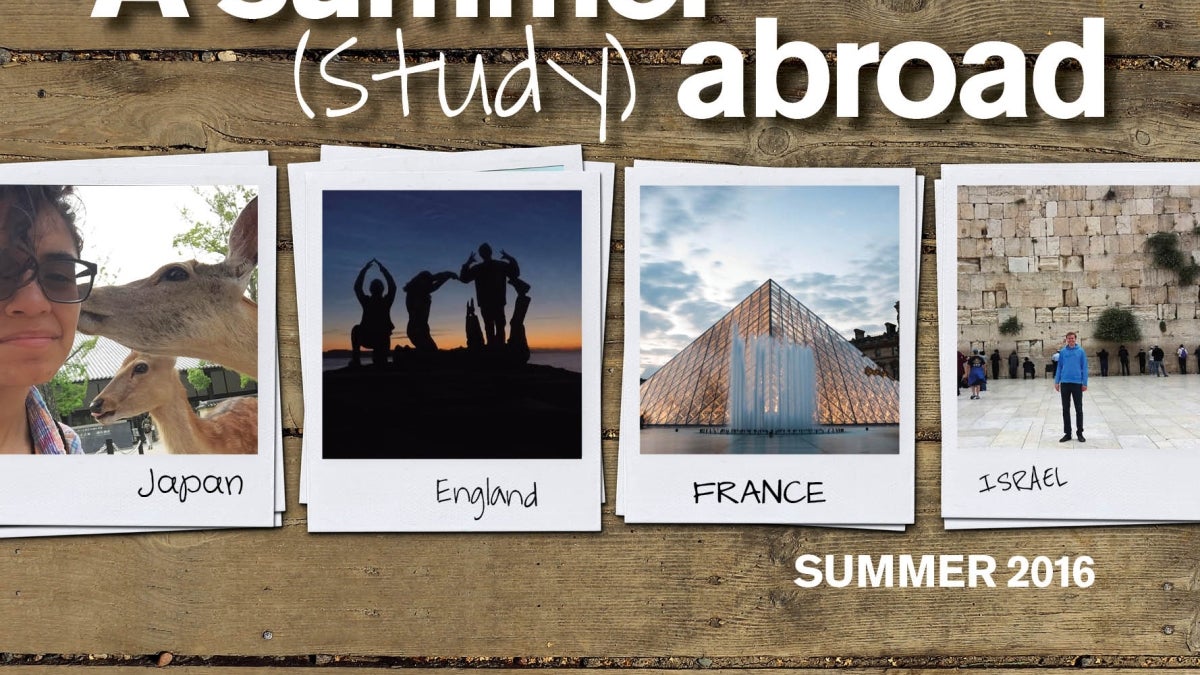
A summer study abroad with Ira A. Fulton Schools of Engineering students.
Studying abroad can be an orienting, exciting and beloved part of a student’s university experience. During their weeks or months abroad, students gain a clearer view of the world — along with its people, complexities and beauties.
Fifty-five students in the Ira A. Fulton Schools of Engineering traveled abroad during summer 2016. Many of them chose to attend faculty-directed study abroad programs, which are specially designed and led by faculty members in the Fulton Schools.
Learn about some of their favorite sites, lessons and takeaways below:
Paris: Photography, Architecture and the City of Lights
Imagine sauntering through the uncrowded, rainy streets of Paris studying the interplay of a cloudy sky and centuries old architecture behind the eye of a camera lens.
John Hebrank, a graphic information technology (GIT) senior, had this and many other beautiful moments in Paris as part of a two week study abroad that focused on architectural photography. With stops at places like the Versailles Palace, the reality-twisting Bir-Hakeim bridge featured in the movie Inception, the Eiffel Tower and the Louvre, Paris is a goldmine for stunning architecture.
The faculty-directed study abroad included 18 students, and was led and created by Penny Ann Dolin, an associate professor of practice in graphic information technology.
She began the program in 2010 in an effort to combine her passion and expertise in photojournalism and commercial photography. Chad Westover, a lecturer in GIT, also helped with the creation of the program.
“This coming May will be my 5th program to Paris and it gets better every year,” Dolin said.
Dolin’s goal is that the students gain a deep perspective of a classic city and learn through visual interpretation of the the structures they visit.
“I encourage them to transcend just representational photography and look for the shapes and forms that the architecture contains,” she said.
Hebrank’s primary focus is photography along with videography and graphic design. “This program really helped me open my eyes and create shapes that I’ve never seen before,” Hebrank said.
His takeaways from the trip include learning how to use the right equipment and how to take his time to compose the right image.
"This was my third time going to Paris, but this time was different. I saw the city from a different perspective though my camera which made me appreciate it that much more,” Hebrank said.
”Part of a university experience should be exposing students to cultures and environments that are new and perhaps challenging,” said Dolin. “I believe at the end of the program they have a new appreciation for a different culture, an understanding of a truly historical city and have learned to see the world a little bit differently.”
View more of John Hebrank’s and other students' photography from the trip.
Japan: Visualization and Simulation
Software engineering junior Cecilia La Place spent two weeks studying visualization and simulation in Tokyo, Japan, and learned about the engineering marvels that run one of the most dense cities in the world.
As part of the program, led by Lecturer Yoshihiro Kobayashi, 16 students implemented a computational tool that integrates multiple systems together, such as traffic logistics, complex train system scheduling and AI-agent systems for crowd management.
“The learning experience itself was quite fun given my tenacity for learning new things,” La Place said.
They also visited top Japanese engineering companies Toshiba, Nissan and NEC Global to learn how engineers work there and to meet with their executives.
La Place enjoyed seeing the technologies and development strategies the Japanese companies shared with the group and touring the college campuses.
“I believe these experiences will open their minds in engineering and help them develop more international communication skills in engineering in the future,” Kobayashi said.
La Place said it was much like taking a class at ASU, but in another country where she didn’t speak the language and had little interaction in English outside of her study abroad group. By the end of the trip, she picked up a little Japanese and learned a lot about the culture.
In addition to the two-week program in Tokyo, she spent the following two weeks taking in the sights, culture, and foods from Hokkaido in northern Japan to the Kansai region in southern Japan.
“Japan is incredibly different to America,” La Place said. “It was a humbling experience.”
Startup Nation: Entrepreneurship in Israel
Biomedical engineering senior Shaun Wootten spent two weeks studying entrepreneurship in Israel, splitting time between Jerusalem and Tel Aviv. The study abroad focused on introducing students to Israel’s entrepreneurial ecosystem, including meeting key players, observing the startup process and exploring the cultural, political and technological factors that have transformed Israel into a startup-focused nation.
The faculty-directed program was led by technological entrepreneurship and management program chair Carolyn Hirata and Jason Bronowitz, a lecturer in the program.
Wootten and the 10 other students met with startups, companies and venture capitalists including Intel, Mobileye and HP Indigo.
For Wootten, studying entrepreneurship as an engineer is essential because “engineers solve problems, but entrepreneurs bring that solution to the consumer market."
One of the highlights of the experience was a presentation from Melanie Samson, a knowledge development expert from HP Indigo, who discussed biomimetics and the ways in which nature can spark innovation.
“It’s the connection between nature and innovation that brought the printer to life and you could apply these connections to possibly innovate other devices or create new devices,” Wootten said.
Aside from entrepreneurship-related activities, the group floated in the Dead Sea, did an archaeological dig and toured sites such as the Western Wall, the Church of the Holy Sepulcher and the Israel Museum.
Israel is a great location for an entrepreneurship study abroad with more tech startups and venture-capital funding per capita than anywhere — even the United States, and a strong startup culture in Tel Aviv. Wootten ended his study abroad with an impression that Israel can be “a startup nation with the potential to compete with Silicon Valley.”
“Bombs, missiles and conflict are the only things you hear from the media about Israel. But they left a couple of things out: their uniqueness, their innovations and their sense of community,” wrote Wootten on his Facebook page.
In addition to Israel, he learned that engineers all around the world “can apply their talents to the rising startup climate that is seen today.”
Aero-Mechanics Summer in England
The trip, headed by Timothy Takahashi, aerospace and mechanical engineering Professor of Practice, consisted of a week in London and four weeks in Winchester, in the south of England. The coursework entailed the study of the differing laws and guidelines that apply to designing and building aircraft internationally, according to Gonzales.
“It's nice as a study abroad trip, since the class is often smaller than it would be in a giant lecture hall,” said Gonzales. “You get to know the people and the professor quite well, which makes for more fun and makes it easier to talk about academics and really understand what we're getting into.”
In addition to gaining a broadened understanding of their chosen industry, the group spent time soaking in culture throughout England.
“Between museums, air shows and roaming the famed cities in search of more monumental history — and of course pubs — we really did get to experience a lot of England,” Gonzales said.
The group visited the British Museum, attended the biennial Farnborough International Airshow and brushed up on some aviation history at the Duxford Imperial War Museum.
“The air show was pretty cool as they brought together many various companies and both new and old aircraft to show off. There were grounded versions we could tour and lots of [aerobatic] demonstrations,” Gonzales said.
In addition to the educational and cultural benefit of the trip, Gonzales noted the value of bonding with her fellow classmates and living abroad.
“I've realized that it's quite possible that many of the friends and connections we made here will likely be connections we all carry into the workplace together as well, even beyond our college years. Good connections with good people, who enjoy similar interests and share new experiences are things you can't put prices on. Which really makes this trip a lot more meaningful to me,” she said. “Between that, and the experience [of] living in another country and learning academics and lifestyles in ways that allow you to compare and contrast American and British differences, there truly is nothing like it.”
Written by Rose Serago, Pete Zrioka and Monique Clement
More Science and technology

ASU postdoctoral researcher leads initiative to support graduate student mental health
Olivia Davis had firsthand experience with anxiety and OCD before she entered grad school. Then, during the pandemic and as a…

ASU graduate student researching interplay between family dynamics, ADHD
The symptoms of attention deficit hyperactivity disorder (ADHD) — which include daydreaming, making careless mistakes or taking…

Will this antibiotic work? ASU scientists develop rapid bacterial tests
Bacteria multiply at an astonishing rate, sometimes doubling in number in under four minutes. Imagine a doctor faced with a…

